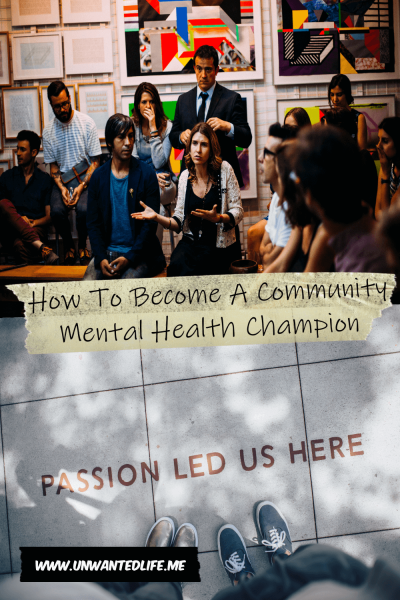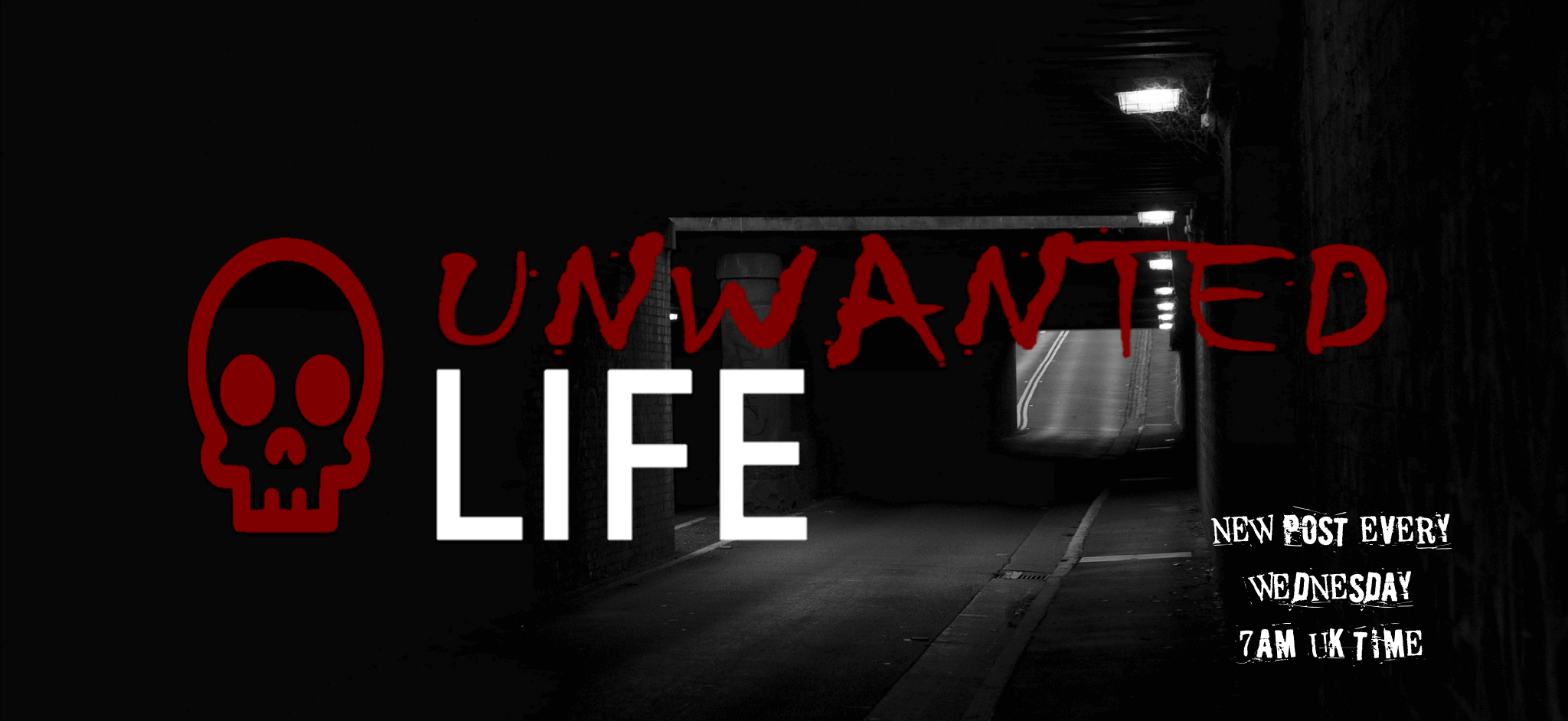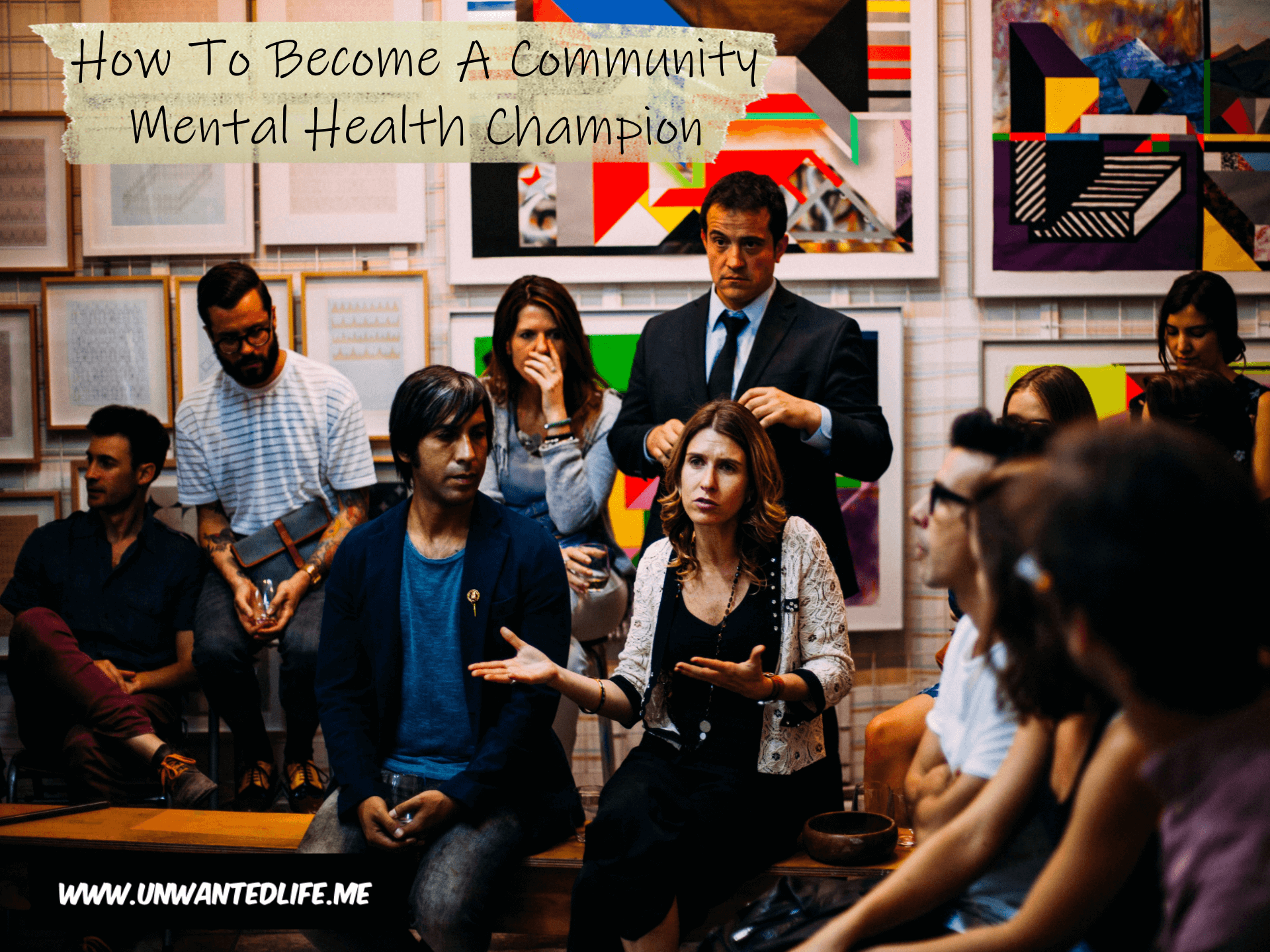With Time To Change closing in March 2021 due to their funding being stopped, I’ve been trying to adapt and condense their work into articles to keep what they started going. Previously, I did ‘How To Become A Workplace Mental Health Champion‘, now I’m following up on that with part 2, being a Community Mental Health Champion. So credit where credit is due to Time to Change, again.
What Is A Community Mental Health Event?
Simply put, this is an event to bring people from the local community together with volunteers willing to share their experiences of mental health issues. This isn’t the only aspect of a community mental health event, but it’s one of the more important to get a dialogue going about mental health. However, other activities can also be a part of the event.
What Are The Benefits Of A Community Mental Health Event?
It’ll bring the community together to challenge the discrimination and stigma that still surrounds mental health. Furthermore, it’ll also educate people from the local community about mental health problems, which will be a catalyst for changing the perception of mental health and wellbeing. Starting small with local events can have a rippling effect that affects the wider picture of mental health and wellbeing.
By bringing people together who may and may not have a mental health condition will get the conversation started. By sharing information mixed with personal first-hand accounts, it’ll help break down stereotypes.
What You’ll Gain From Being A Community Mental Health Champion
- The knowledge that you are part of a movement to create positive change.
- You’ll develop new skills in setting up a community event.
- The knowledge that you’ve done something to benefit your community.
- You’ll increase your confidence in public speaking.
- It’ll look good on your CV.
- You’ll have helped to reduce mental health stigma in your community.
Planning Your Community Event
1. PLAN THE ESSENTIALS
2. FIND PEOPLE TO WORK WITH
3. PLAN YOUR BUDGET
4. CHOOSE YOUR LOCATION AND VENUE
5. RECRUIT YOUR VOLUNTEERS
6. PROMOTE YOUR EVENT
7. KNOW YOUR HEALTH AND SAFETY REQUIREMENTS
8. EVALUATE YOUR EVENT
9. CELEBRATE AND SAY ‘THANK YOU’!
1. Plan the essentials
Event activity – The first thing you’re going to want to consider is what are you going to do for the event. For example, you could put on a café event and have people come for a hot drink, cakes, and a chat about mental health. Alternatively, you may want to go bigger and coordinate an event with local and national mental health organizations. Ultimately, the size of the event doesn’t really matter, so do an event you feel capable of putting on as a community mental health champion. Any event will do when it comes to tackling mental health stigma.
Date and time – Once you have an idea of what kind of event you’d like to put on, it’s time to see when you could do it. The first thing you should probably do is find out about what is already happening in your community. This will allow you to work around any existing events so you can then pick the best date and time. You should be able to find out about these other events on your local council’s website. You might also want to check the calendar for cultural, religious, and school holidays, to avoid any clashes with those and so you don’t exclude anyone by mistake.
Venue – If you have an idea of what kind of event you want to put on, then you can start drawing up potential venues and locations to put the event on.
Materials – Now it’s time to jot down what kinds of things you’ll be needing for the event, where you can get them from, where it can be delivered, where can it be stored, etc.
Audience – What is your target number of attendees for the event and is that target realistic or too optimistic? Will you have enough space for everyone?
Volunteers – Your team of volunteers will be the backbone of making your event happen. You’ll also want to spit your volunteers in different roles when you do look for them, as you may want people to share their personal first-hand experience of mental health. For these story-sharing volunteers, you’ll want to make sure theirs enough to tell their stories to everyone and that they don’t get overwhelmed by having to individually share their stories too frequently.
2. Find people to work with
It might even be easier to look for volunteers before you go through the above steps so they can help you build the event from the ground up. That’d be a great way to reduce your own stress. The obvious place to start would be to talk to family, friends, and co-workers.
3. Plan your budget
Whatever the size of your event, it’s probably going to need money, so work out your budget and try to secure funding for the event where you can. A lot of businesses are only too happy to support or even sponsor such events, especially if it’s in exchange for having their branding on the event materials. People in the community might also be happy to help where they can to reduce the budget. For example, if you’re doing a cake and coffee event, then people from the community might be willing to make and donate cakes for the event.
4. Choose your location and venue
Do you take a chance on the weather and book an outside space, which can be better for attracting passersby, or do you go for indoors where you won’t have to have a backup plan for bad weather? Furthermore, if you have an outdoor space, you’ll also have to consider things like toilet facilities.
Also, if you want to use local council land for your event, then you may have to seek permission quite a bit in advance, as getting such permissions can often take a while.
Time to Change also advise the following if you’re hiring somewhere yourself:
- Ask for confirmation details.
- The times of the event and the area available to you.
- Hire costs and potential costs (for example, if you overrun or if damage is caused).
- Access to the venue (both on the day and for deliveries beforehand).
- ‘Closing up’ of the venue.
- Site plan of the event layout.
- Facilities (toilets, accessibility).
- Venue contacts (who will be available on the day).
- Full terms and conditions.
- Security overnight if needed.
- Get all this information in writing wherever possible.
- Keep a copy of any signed agreement.
- Bear in mind that you may have to pay a deposit for a venue well in advance of the event itself.
However, if you are able to work with an organisation, like Mind, to do the event, they might be able to offer your their building to function as the venue for your event.
5. Recruit your volunteers
Time to Change provided a way to figure out how many stories-sharing volunteers you’re likely to need. They said they found that on average the volunteers would have around six conversations an hour, creating the following formula.
Number of people expected to attend (e.g. 300 attendees)
Divided by
Number of hours your event will last (e.g. 5 hours)
Divided by
How many conversations a volunteer can realistically have in an hour (6)
Equals 10 volunteers
(300 / 5 / 6 = 10)
Therefore, for an event that is expecting 300 attendees over a five-hour-long event, you will want to recruit about 10 story-sharing volunteers. Thus, you’ll want to create different volunteer roles and then recruit accordingly for each of them.
If you need help looking for volunteers to fill the many roles, then you can check with your local mental health organisation, NHS Trust, your local council, or your local community services, and theirs even a few volunteering services that you could reach out to (Do It, vinspired.com, NCVO, and iVolunteer). There’s also more information on the government’s website: https://www.gov.uk/government/get-involved/take-part/volunteer. You can also try doing call-outs on social media and in the local papers to drum up volunteer support, you could even put up posters as not everyone has the internet.
6. Promote your event
Where you promote your event will be important if you want to get the community to attend. The easiest place to start would be online. You could look up your local community services websites and their social media profiles, pages, and groups. When you’ve found these, just reach out to them and see if they’d be willing to help or to allow you to share your event through them. You could even request your local council put it up on their site, as some have a local events guide.
Another thing you could do is to talk to local businesses, GP surgeries, hospitals, schools, libraries, community centres, etc. to see if you could put posters in their windows and high-traffic areas. Also, sites like GumTree have a community section whereby you can list your event as well, and sites like Where We Can Go allow for free event listings.
Other things you could try are to ask local organisations if they’ll include your event in their communications and memos. Lastly, you could contact your local media to feature and cover the event.

7. Make sure you are clear about health and safety
Legal responsibilities – Make sure you are aware of your responsibilities as an organisation or group running the event. All private and public organisations are legally responsible for the welfare and safety of their participants, and voluntary organisations have a ‘duty of care’ not to harm or endanger anyone as a result of their activities. If you collaborate with an organisation, then this burden will be shared with them.
Risk assessment – The purpose of writing a risk assessment in advance is to allow you to identify potential risks and then think about how to minimise them. A risk assessment will look at areas like equipment, fire safety, the safety of attendees, volunteer safety, etc. Simpler and smaller events will have less potential risk to account for, so if you’ve never done an event before, starting off with a smaller one to wet your feet might be a good place to start.
Insurance – Hopefully the organisation you’re working with or the venue itself will be covered by public liability insurance. However, check beforehand, especially to make sure it’ll cover your events activities.
Method statement – You might also benefit from having a method statement, which is a sequence of steps taken to complete a task for the event in a safe manner. The method statement should also include any potential risks and hazards in the step-by-step guide, to ensure it’s done safely.
Accessibility – To try to make your event as accessible as possible, take time to see how you can best achieve that. This isn’t just about disabled people being able to join the event, but also stuff like dietary needs when relevant. Luckily, Time to Change has provided 15 questions you can ask yourself and your group to try to make your event as accessible as possible.
- Does the event have full wheelchair access to all areas?
- Does the location have fully accessible toilets?
- Are there planned spaces for people who use wheelchairs/power chairs during any presentation or performance?
- Is the event area large enough and has it been arranged to allow people to move around easily?
- Have people with disabilities been considered in case of a fire emergency and has this been made clear to staff and volunteers as well as when doing ‘housekeeping’?
- Is there good lighting (bright without glare)?
- Are all other handouts and materials available in an accessible format?
- Do you have signs for your event? Are they clear?
- Do you have a hearing loop and is it working and switched on? Is there someone available who can use this?
- Will your event include speeches or performances? If so, will there be signing for people with hearing difficulties? Do all speakers know they need to speak clearly, not too quickly, and face the audience?
- Where possible have you eliminated or reduced background noise during the event?
- Is there a quiet area for people needing ‘time out’?
- If you have produced flyers, have you asked about specific requirements on any booking forms and actively welcomed any queries about access? Do they include a map and /or public transport information?
- If people need assistance, will they be able to find staff easily?
- Does the schedule for the day allow for breaks?
Health and first aid – If it’s legally required (although if you’re doing a tea, coffee, and chat event, then this might not be needed), have qualified first aiders at your event. You should be able to sort this out with your venue and/or whichever organisations you’re collaborating with. However, you can also find first aider support from St John’s Ambulance if needed.
Mental health – People with mental health problems may be attending your community mental health event. You might also have volunteers with mental health issues. Thus, you’ll need to put some things in place for them. Having a quiet area where people can go to settle down is a good start, but you can also have your volunteers make crisis cards to keep on them which can then be referred to if they have a crisis (click here for a template you can use courtesy of blurt).
You should also encourage your volunteer to take breaks and to discuss any concerns they may have. One way to do this would be to group volunteers up with a coordinator who they can go to for help and support. Lastly, make sure to have the contact details for the local mental health crisis team, just in case someone does end up in distress at the event.
Child protection – All adults who have direct contact with children or vulnerable adults (who are not being accompanied by a parent/carer) during the event will need a valid criminal record check, which is the DBS (Disclosure and Barring Service) in the UK. If you recruit from a volunteer organisation, then they will most likely already have these done, so just check with those organisations.
8. Evaluate your event
Evaluating your event after you’ve had it will allow you to know how well the event went and what improvements you could make should you want to do another one. One way you could do this is by getting feedback from your volunteers (especially the story-sharing volunteers), asking for a questionnaire to be completed by those that attended, and talking to the organisations you collaborated with.
9. Celebrate and say ‘THANK YOU’!
Don’t forget to celebrate your achievement with your team of volunteers and everyone else that helped out. Putting on an event can be hard work, even if it is for a good cause. Therefore, unwind after the event and thank everyone for the efforts they all put into making the event happen, and don’t forget to thank yourself. This is also a good time to do a debrief with your volunteers.

The Volunteers
As I already said, sort your volunteers into roles so you know how many of each you’ll need. However, to make this even more effective, create a volunteer information sheet for each volunteer role (a lot of the information will be similar, so don’t worry).
The information sheet should include the following:
- What their role will be.
- Why they should volunteer and what the aim of the event is.
- Who can volunteer.
- How long they should be expected to volunteer.
- How they will be identified on the day – for example, will they wear badges or t-shirts?
- Whether it will cost anything and whether expenses are reimbursed. It’s good practice to pay volunteers’ travel expenses to your event, so include this in your budget.
- What, if any, training/support is offered.
Training
Training could be important to your event, depending on what your event is. If you’ve created different volunteer roles, then going through what’s expected from each role and the should and shouldn’t do’s at the event will help your volunteers feel more comfortable.
If you’re going to do training sessions with your volunteers that cover this, then remember to start off the session with an ice break (check out my Mental Heal Pub Quiz for a potential idea). Follow that with talking about your role, their roles, and what the purpose of the event is.
If you’re working with other organisations, then you could collaborate on how to train the volunteers. As a rule, the bigger the event, the more you’ll need to make sure everyone is trained and knows what’s expected of them in their role. Training, or at least some sort of regular meetings to discuss the event, will help foster a team spirit. It’ll also give people an opportunity to ask questions and to get reassurance.
You may even be able to ask volunteer mental health services to support you by training your volunteers if needed. A lot of volunteers’ mental health services will have in-house training for their own volunteers, which they might allow you to piggyback on. Doesn’t hurt to ask.
Mental health
For your story-sharing volunteers, you’ll want to ask them about their mental health needs. Because you’re recruiting people for this role who have personal experience of mental health issues, you’ll want to make sure they’re comfortable talking about their mental health stories with people from the public. Thus, you’ll need to ask these volunteers if they’ll first be happy to discuss their mental health with the general public and then ask if they could briefly share their experience with you to see if they’ll be comfortable doing it or not.
Recording volunteer information
Firstly, be mindful of how you’re recording and storing the personal information of your volunteers. Also, be careful who you share this information with, as your volunteers’ data should be protected.
There’s no need to ask for a lot of personal information, only what’s necessary for the event, creating a table or database to hold the information. The basic information you might want to record on a form could be:
- Full name.
- Contact telephone/mobile number.
- Emergency contact and telephone number.
- Email address.
- Postal address.
- Age – if the volunteer is under 18, you’ll need them to complete an age consent form signed by their parent/guardian.
- Accessibility requirements or any other specific needs.
- Dietary requirements – only needed if providing food and hot drinks like tea and coffee (milk alternatives).
- Any medical conditions such as allergies.
- Please indicate your availability and preference of shift (for example, morning, afternoon, no preference).
- T-shirt size if you’re getting T-shirts for the volunteers (for example, small, medium, large, and XXL).

Other resources
Don’t forget to factor in resources for the volunteers, like food and drink, breaks, transport, and maybe even a quiet space.
As always, leave your feedback in the comments section below. Also, feel free to share your experiences with mental health and/or putting on events in the comments section below as well. If you want to stay up-to-date with my blog, then sign up for my newsletter below. Alternatively, get push notifications for new articles by clicking the red bell icon in the bottom right corner.
Lastly, if you’d like to support my blog, then you can make a donation of any size below as well. Until next time, Unwanted Life readers.


This is such an informative post, I love that you’ve broken down what it means to be a mental health champion- and help out those who are struggling in your community. Thank you for sharing x
Thank you ☺️
Another great post! I really like the fact you explained how to become a Community Mental Health Champion which by the way is very interesting and important to share. Also, wanted to wish you a Happy New Year!
Olivia | https://www.oliviaandbeauty.com
Thank you ☺️ hopefully the helpful guide will lead to people putting on events for their communities
This is a great post! There are so many people that can benefit from attending, but more than that…..great information for planning the actual event!
Now we just need the pandemic to end so such events can be put on
This is such a well written post. I’ve bookmarked it for when the pandemic ends, as I’d love to make more of a difference and holding these types of events would really help.
Thank you ? hosting such an event would be a great way to mark the end of the pandemic, a lot of people have been struggling with their mental health over the last 9 months
Your posts are really helpful for people dealing with mental issues. I guess this Pandemic has made many people mentally and emotionally weaker a community mental health champion is definitely we need.
Indeed
This was a very thorough and well written guide. Having people who can step up and create events like this is important. If they don’t, who will?
Indeed
This was very informative, and I appreciate you giving credit out – I was unaware they’d be stopping due to no more funds, it is so sad x
It’s such a shame they’ll be closing. I hope the website remains so the information they’ve provided is still available
Very informative post for creating need to support people dealing with mental health problems!!
Thank you
So much information and I love the way you have broken down what could be an overwhelming task into small steps that anyone can follow. This is a great guide for anyone wanting to help out their local community!
Communities need to come together and support each other more than ever
Love this! Such a great guide for anyone who doesn’t even know where to start!
Katie | katieemmabeauty.com
I’m glad you like it
i love this! especially how you went into detail to include people from all forms of backgrounds!
Thank you
This is one organized post! I appreciate how you broke it down into manageable tasks. Nicely done. Thank you and Happy New Year!
Thank you and happy New Year to you too
I feel like I should forward this to my sister because she would be all over this!
Me… Not so much, I’m too much of an introvert.
Cora | https://www.teapartyprincess.co.uk/
I’m the same
This is amazing!! When this all over with the covid thing. I would love to be part of it and make change and help the community. Thank you for sharing it!
I hope you do, we could all do with it once this is all over
Volunteers are the backbone of events like this, and helping them feel seen or appreciated is so important. Building in comfort and and ensuring they are comfortable sharing their stories at the event is a great idea. This sounds like such a wonderful organization, it’s sad when non-profits lose their funding sources. Thank you for preserving the knowledge and caregiving model.
Volunteers are the backbone of a lot of charities and nonprofit organisations that fulfill an important role in society in general
I’m trying this with my uni and it’s soo difficult. Thanks for great advice!
I hope this information makes it easier for you
This is so informational! Thank you for sharing!
Thanks for reading
Very good tips, and so thorough! We have been involved with our community, but we have yet to do something for mental health. We recognize how important it is, especially during this time. Thank you for the inspiration.
I’m glad it inspired you ?